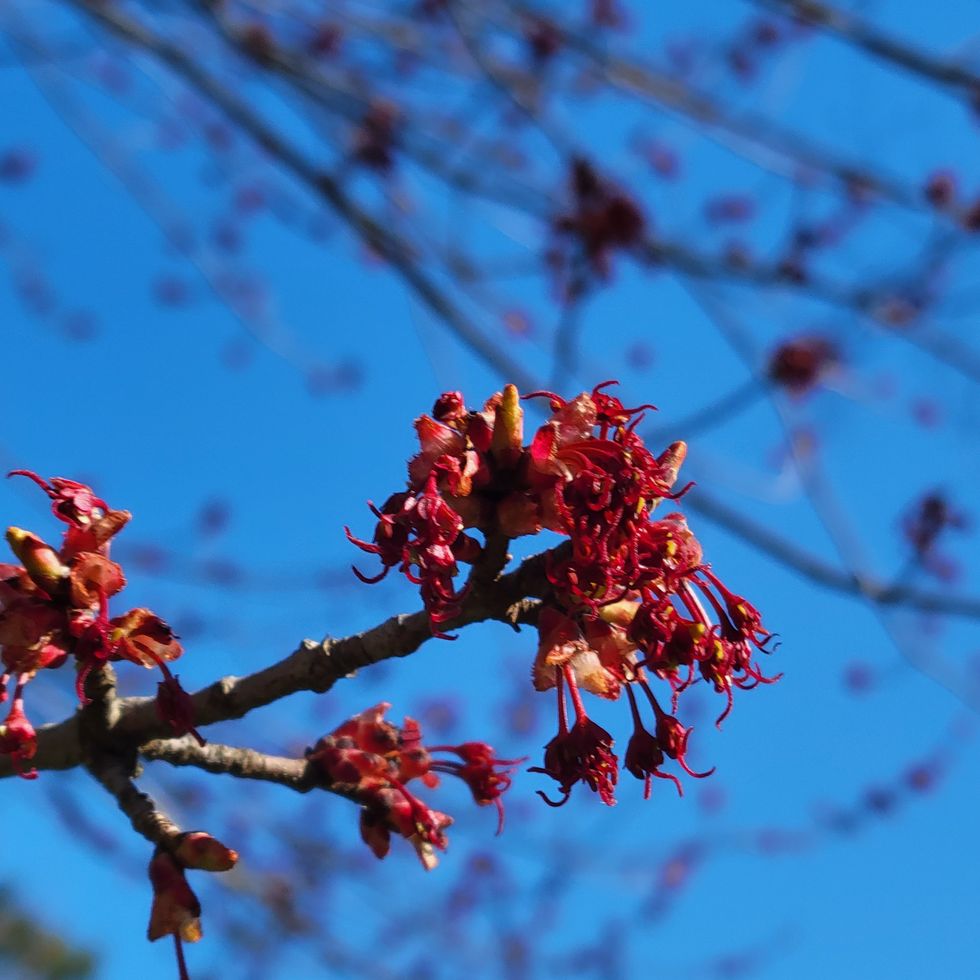NORFOLK — Coming off an unusually mild winter and the warmest January on record in New England, pollen season has exploded, bringing with it misery for those who suffer from seasonal allergies.
And at least for the next several weeks, there will be little relief as warm weather patterns cause tree pollen to proliferate.
No need to ask Janine Culworth how the airborne allergens are affecting her. Just look into her itchy, watery, red eyes.
“It’s like a sandstorm in my eyeballs,” said Culworth, a New York native who was visiting friends in Norfolk last weekend. Her trip coincided with dry, breezy days.
“Ever since we went hiking, I’ve been rubbing my eyes and sneezing,” said the athletic 26-year-old. “I do have allergies, but never this bad and never this early.”
The day Culworth and friends hit the trails, Friday, April 7, the pollen count in northern Litchfield County was in the “high” category, reaching 10.8 out of a possible 12 rating, according to the website Pollen.com, which tracks daily pollen counts by zip code or location.
As temps rise, pollen levels increase
Health and forestry experts said the pollen now swirling is just the beginning of what is shaping up to be several more miserable weeks for those allergic to pollen, as trees release airborne allergens which are picked up and carried by the wind.
Various trees, grasses and weeds release pollen from spring through fall, which can cause symptoms including sneezing, sniffling, irritated eyes, scratchy throat, coughing and fatigue.
As of last week, patients at Dr. J. Keith Joseph’s office in Sharon were presenting with cold-like symptoms, but not at an unusual level, he said. At least yet.
“We are still seeing mostly cold and virus symptoms when patients come in,” said the Nuvance primary care physician.
“What is pretty clear is that people who are exposed to farms, for example, have less seasonal allergies,” and the same holds true for those who spend a significant time in the great outdoors, he said. “Allergies have been increasing over time, particularly among those who are less sedentary.”
Those who relocate to or visit rural areas with an abundance of trees are also more likely to be affected.
Red maples kick off 2023 season for sneezin’
The main culprit currently releasing small, airborne pollen particles is the red maple, which are the earliest trees to flower. They are pollinating earlier and for longer periods of time, according to Thomas Worthley, Associate Extension Professor at the University of Connecticut Extension Service.
“Red maples (Acer rubrum), also known as soft maples, are among the earliest tree species to be in flower and they are in full bloom at this time,” he said.
“The sheer abundance of red maple currently across the forest landscape might be reason that some pollen sufferers are experiencing what seems to be an early pollen season.”
A view of the forested landscape or tree canopy from a high vantage point currently reveals a distinct, reddish hue in portions of the otherwise leafless canopy, the UConn professor noted. “This is red maple in flower, often seen in patches.”
Not the most dominant, or largest volume, but huge numbers of smaller stems are growing on all types of sites, and any red maple over 20 years old will be producing abundant flowers and eventually seeds, the state forester noted.
“They are quite prolific in this way and are likely the primary pollen producer at this time,” along with a few other species also flowering, including some willow, magnolias, shadbush and soon, cherries, said Worthley.
He said a greater proliferation of pollen, which is a part of a plant or tree’s reproduction process, will be swirling in the coming weeks and likely trigger sneezing, coughing, watery eyes and other cold-like symptoms. “Human sensitivity can vary according to tree species.”
Later in the spring, oaks, birches, pines and many others will flower as the leaves start emerging, but not for at least another three to four weeks.
A report released recently by Climate Central, a nonprofit focused on climate news and research, noted that climate change is making pollen season not only longer, but more intense, as growing seasons expand.
Importance of forest management
Forest canopies are constantly maturing and evolving as some species of trees age out and others are threatened by invasive insects.
For example, said the forestry expert, in many forest stands dominated by oaks and hickories, some oaks, such as black oaks, are aging out. “At 100 years, they are old trees and are subject to senescence and eventual death.”
Red maple, he said, is often persistent for decades in the subcanopy and will respond to canopy openings created through the loss of oaks growing into more dominant positions.
In other cases, he said, the loss of oaks, “and perhaps ash in larger numbers due to invasive insect activities, spongy moth and emerald ash borer, respectively, have produced unprecedented opportunity for red maple and other subcanopy species like beech and birch to become the dominant canopy species mix instead of oaks.”
According to the Mayo Clinic, studies show that climate change is contributing to longer and more severe allergy seasons. From 1990 to 2018, pollen seasons in North America lengthened by 20 days and pollen counts grew by 21%, according to a study published in the Proceedings of the National Academy of Sciences of the United States of America.
How to treat/alleviate allergy symptoms
Nip them in the bud, according to the Mayo Clinic.
To reduce exposure to things that trigger allergy signs and symptoms, stay indoors on dry, windy days.
The best time to go outside is after a good rain, which helps clear pollen from the air.
Other measures include avoiding lawn mowing, weed pulling and other gardening chores that stir up allergens, remove clothes worn outside and shower to rinse pollen from the skin and hair.
Also, don’t hang laundry outside to dry, as pollen can stick to sheets and towels, and wear a face mask if doing chores outside.
The Centers for Disease Control and Prevention recommends that those who are allergic to pollen take allergy and/or asthma medications as prescribed by a physician and use high-efficiency filters in home ventilation and air conditioning systems.



 Eli Jamieson, No. 4, congratulates teammate C. Jones after a goal.Photo by Lans Christensen
Eli Jamieson, No. 4, congratulates teammate C. Jones after a goal.Photo by Lans Christensen
 Mia DodgePhoto by Riley Klein
Mia DodgePhoto by Riley Klein Patrick Money
Photo by Riley Klein
Patrick Money
Photo by Riley Klein




